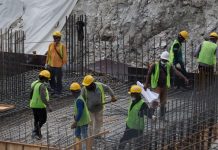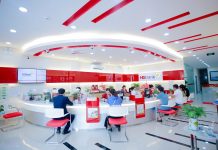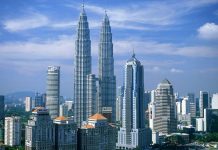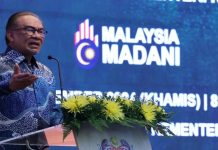
Malaysia-based Aseagate (M) Sdn Bhd together with Richwood Capital Sdn Bhd (RWC) are expected to stamp its mark as a leading player in the agarwood industry via a US$200 million venture in Laos .
This agarwood venture is the first of four phases, which will be implemented over six to eight years, with a total worth of US$7.2 billion.
The Global Outstanding Chinese 100 Organisation of Singapore (GOC100), which was awarded the exclusive concession by the Lao Central Government’s Ministry of Agriculture and Forestry to manage the country’s agarwood plantation, today inked a Memorandum of Understanding (MoU) with Aseagate which gave the latter sole rights to plantation management over 2,000 hectares of land in Bolikhamsai Province, Laos.
In turn, Aseagate whose forte is in agriculture transaction, inked a MoU with RWC which specialises in forestry management, to spell out their roles in the management, inoculation and supply of agarwood in the Indochina state.
The formalization of the two Memoranda of Understanding that will be implemented in March, paves the way for Aseagate to secure agarwood trees from GOC100 with an estimated contractual value of US$200 million.
The Aseagate-RWC combination will see the inoculation of agarwood trees aged from 15 years to 22 years in Bolikhamsai Province, to produce resin on behalf of the Government of Laos.
The GOC100 had in August 2015 signed an exclusive agreement with the Lao Ministry of Agriculture and Forestry for concession to these trees that are planted within the Lao military base and guarded by military.
The signing was then witnessed by senior government officials including Lao Deputy Prime Minister Somsavat Lengsavad and Singapore Ambassador to Laos, Dominic Goh. News of the signing was carried by Lao’s official English newspaper Vientiane Times and national TV station, Lao TV1.
According to GOC100 (Singapore) Pte Ltd Secretary General, Peter Lee, the Aseagate-RWC venture into Laos was at an opportune time with the recent establishment of the ASEAN Economic Community (AEC).
“The AEC is a major milestone in integrating the ASEAN countries’ economies. The AEC Blueprint 2025 will allow the ASEAN region to operate as an economic community with a population of 622 million and a market worth US$2.6 trillion,” he said.
“The 10-member ASEAN was collectively the third largest economy in Asia and the seventh largest in the world in 2014. As AEC, ASEAN will have more heft in engaging with world economies and in responding to new developments and opportunities.”
Lee noted that China’s one belt, one route policy augurs well for Laos, as a member nation of AEC. “Laos has become more connected to China, one of the world’s largest markets especially with the construction of a US$6.28 billion railway network. Linking Vientiane with the Chinese border, the 418km railway line will complete in four and a half years.”
“This is crucial as China will be a major market for Laos’ agarwood, with Europe and the Middle East as other main buyers.”
According to Aseagate Chief Executive Officer Alexander Vittze Goh, the Lao venture was significant to tap into the growing demand for agarwood, as well as make a meaning contribution to the Lao economy and the well-being of its farmers.
“We are excited and look forward to the commencement of our agarwood operations. The exclusive appointment by the Government of Laos has given us the opportunity to maximise the value and sustainability of these trees to tap into this US$8 billion industry which includes perfume, aromatherapy, incense and cosmetics,” he said.
“Agarwood is pricier than gold with a retail price of between US$5,600 and US$10,000 per kilogramme.”
Backed by the Lao central government, Goh added that the agarwood project was a safe investment as it is more resilient to economic fluctuations as compared to stocks and bonds with insurance purchased for its proven inoculation technique and against natural calamities such as fire and floods.
Meanwhile, RWC Chief Executive Officer Kendrick Ho Qing Tyat said the company was confident of this venture as the management and technical team of RWC has accumulated over seven years of experience in forestry management and agriculture technology, having provided solutions to plantation owners in Malaysia.
“We are upbeat that our expertise will be of value to the Government of Laos. While less than eight percent of agarwood trees produce resin naturally, our artificial inducement method on matured trees will produce more resin in just three years, instead of seven to ten years via the ‘fungal inoculation’ method prevalent among some industry players,” he said.
Ho added that Aseagate-RWC will potentially explore producing wood and wood chips from the agarwood trees as well as ‘agriland banking’ which enables investors to tap into the potential of agarwood farming, albeit the idea is still at an exploratory stage.
























